German Dog Breeds – Discover These Popular Pups!
Published: Last updated: by Jessi LarsonToday German dog breeds represent some of the most popular pups on the planet. So get ready to discover 25 amazing animals!
Historically, German dog breeds are trendy – and we’re not just talking about the German Shepherd.
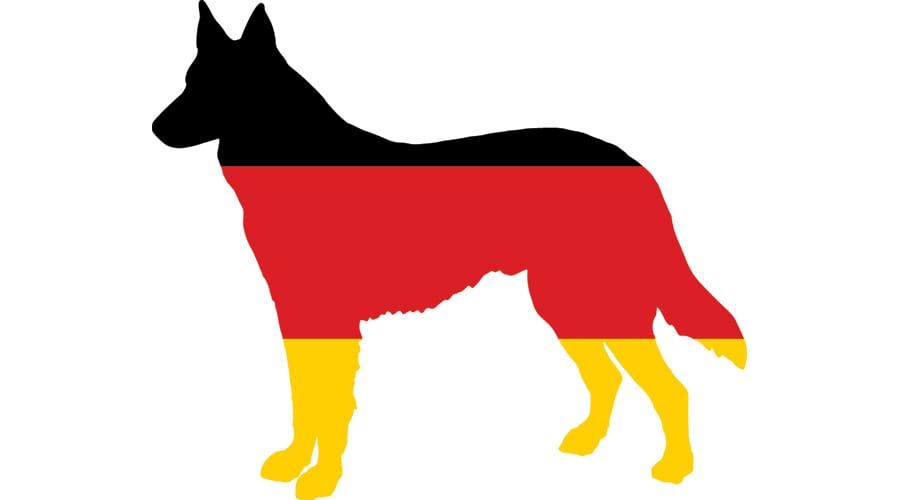
You’ll be surprised to discover the breadth of breeds that stem from the country.
German Dog Breeds Guide
Did you know that Germany is the third-largest dog breed producer?
Many dog breeds have roots in the country, including many working dogs.
Ultimately, German dog breeds come in all types of colors, sizes, and temperaments. Just take a look at these 25 popular German dog breeds, and you’ll see what we mean.
1. German Shepherd
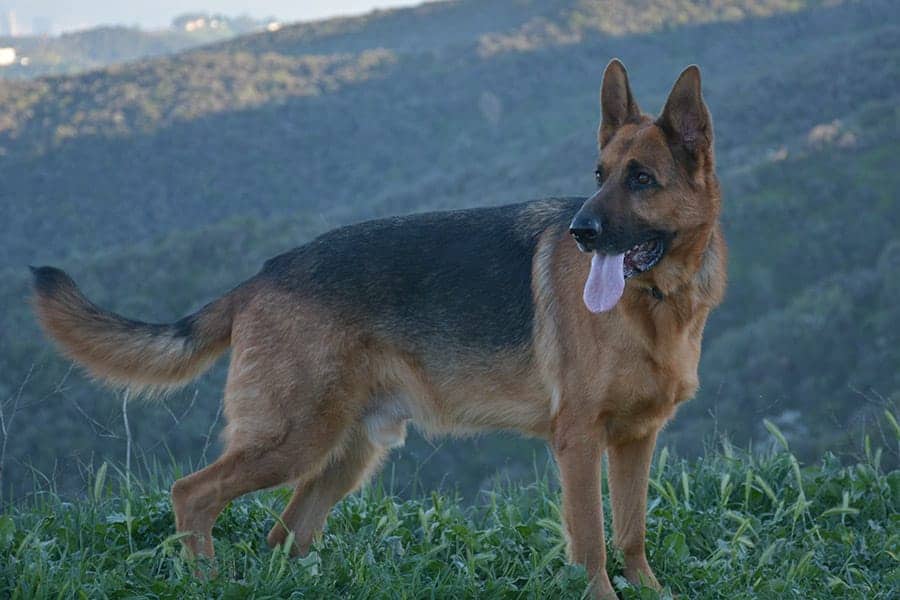
Consistently one of the top dog breeds in the United States and much of the world, the German Shepherd is a popular and beloved dog breed by many.
They are known for their distinct appearance, including a robust and muscular body, thick, luscious coat, and alert, pointy ears.
A noble breed, they are considered one of the hardest working dogs on the planet. This makes sense because they originated from farms and sheepdogs.
It was during WWI that the breed took off in popularity. They are known as intelligent, loyal, and courageous canines.
Today the German Shepherd is most often found as a pet versus a working dog. In this scenario, they are great with children and other dogs and are considered a stoic yet faithful friend.
However, because they were bred as working dogs, ensure the German Shepherd gets enough exercise and stimulation. Proper training is a good idea, too.
2. Dachshund
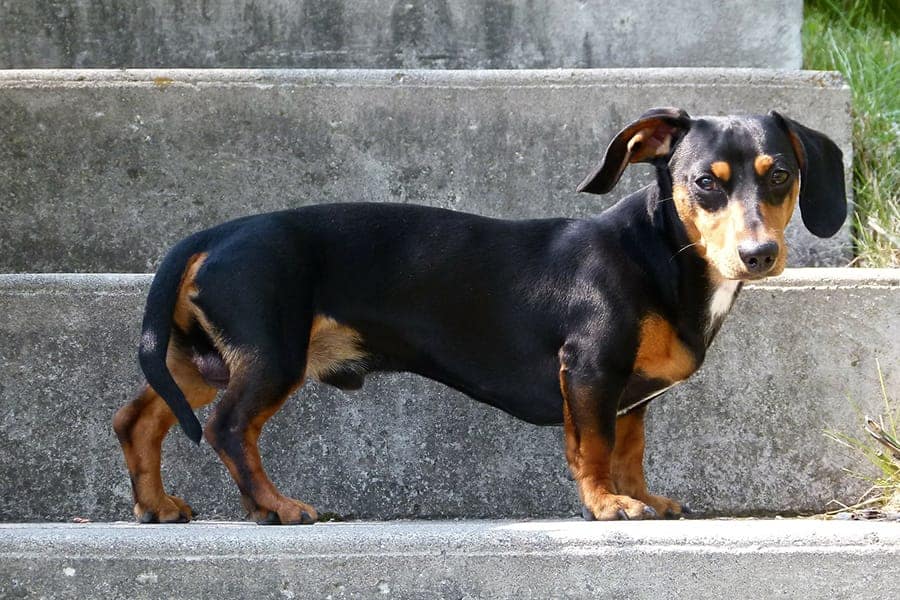
The Dachshund continues to be one of the most popular dog breeds in the world today. With an adorably long body accompanied by short, tiny legs, the breed’s unique appearance has won over legions of fans.
These small, friendly dogs come in two sizes: standard and miniature. Standard Dachshunds tend to stay between 16-32 pounds, with a height of about 8-9 inches, while miniatures are under 12 pounds and stand about 5-6 inches.
The breed also comes in multiple coat varieties, including smooth coat (short hair), long-haired, and wire-haired.
The Dachshund’s personality is fun, excitable, and energetic. Intelligent and aware, the breed has a hefty bark on par with dogs much larger in size.
Interestingly, the German name Dachshund translates to “badger dog,” a fitting moniker for a breed created to hunt badgers and other small creatures.
3. Doberman
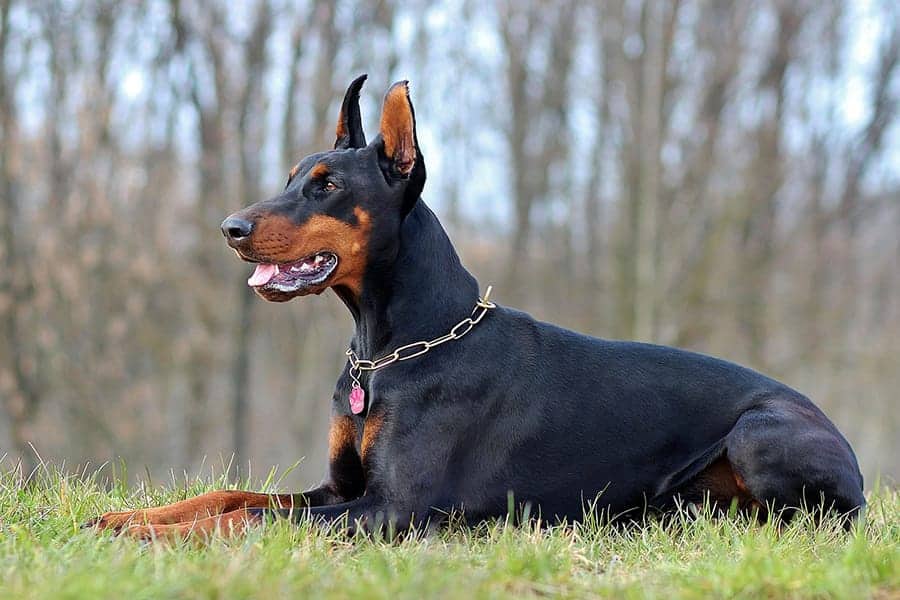
Another pup on this guide to German dog breeds is the Doberman Pinscher, a large, muscular dog that can reach up to 100 pounds.
Dobermans are tall and sleek, with a smooth coat of fur that can be rust, black, fawn, red, or blue.
The breed is often a patrol dog due to its confidence, intelligence, agility, and desire to protect. And although the Doberman’s energy levels and stern demeanor can be intimidating, this dog has a softer side and is an excellent family guardian and companion.
Fascinatingly, the Doberman was developed by a German tax collector to provide protection when he collected money from citizens.
4. Rottweiler

This hardworking dog loves when it has a job to perform. The Rottweiler’s endurance, intelligence, and innate desire to protect make the breed an excellent companion, and it’s no surprise that they’re used as police dogs, service dogs, herders, and therapy animals.
While the breed’s powerful appearance can be intimidating, an adequately trained Rottweiler will be a sweet, loving pet. (Some have even been known to sit on their owner’s lap like a small dog!)
The Rottweiler is believed to be a descendant of Roman dogs used for herding and protecting cattle. These dogs were left behind in southern Germany after Roman armies retreated from the alps, and the breed’s name comes from a town in the area called Rottweil.
5. Pomeranian
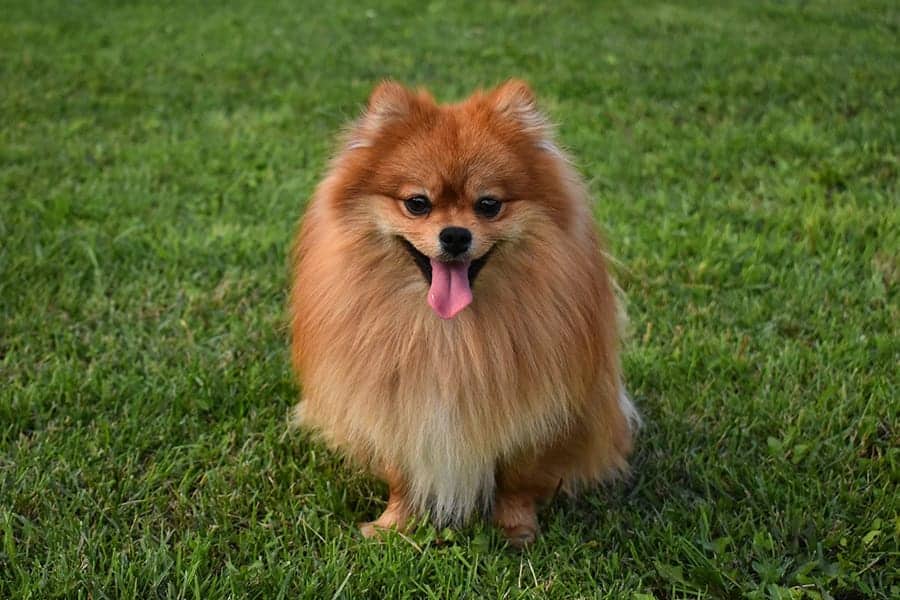
The Pomeranian is a lively 3-7 pound dog. With adorable fox-like faces, they are one of the most popular toy breeds in the world.
While they are tiny, the Pomeranian has a huge personality that makes up for their small size. They can be willful and territorial, but proper training and socialization will keep them on their best behavior.
Notably, the Pomeranian stands out for the frilly double coat that pushes past its head and shoulders and makes it look larger in stature.
This breed is named for the Pomerania region in northeast Germany, a Spitz type of dog.
6. Schnauzer
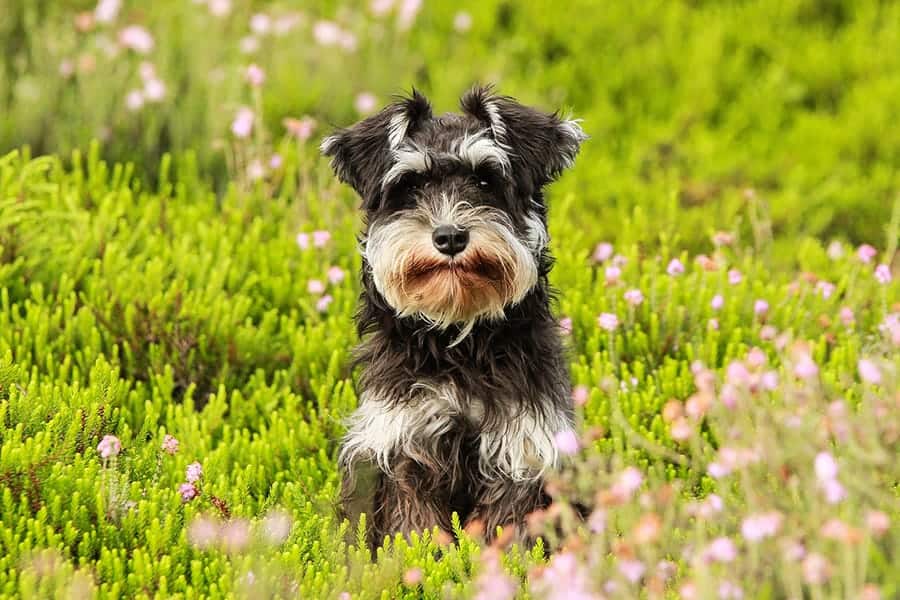
The fearless Schnauzer is a friendly, intelligent, and loyal companion. It comes in three types; each considered its own breed: the Miniature Schnauzer, the Standard Schnauzer, and the Giant Schnauzer.
All three types have a wiry coat of either black or salt-and-pepper coloring, a strong, boxy frame, and a long, eye-brow-filled face.
One of the oldest German dog breeds, the Schnauzer, was initially used as a farm dog. However, the multitasking pup served as a herder, hunter, and guard dog.
Like many dogs, Schnauzers require training and lots of exercise to reach their full potential. However, they make an excellent family and farm dog in the right environment.
They also work great for allergy sufferers.
7. Poodle
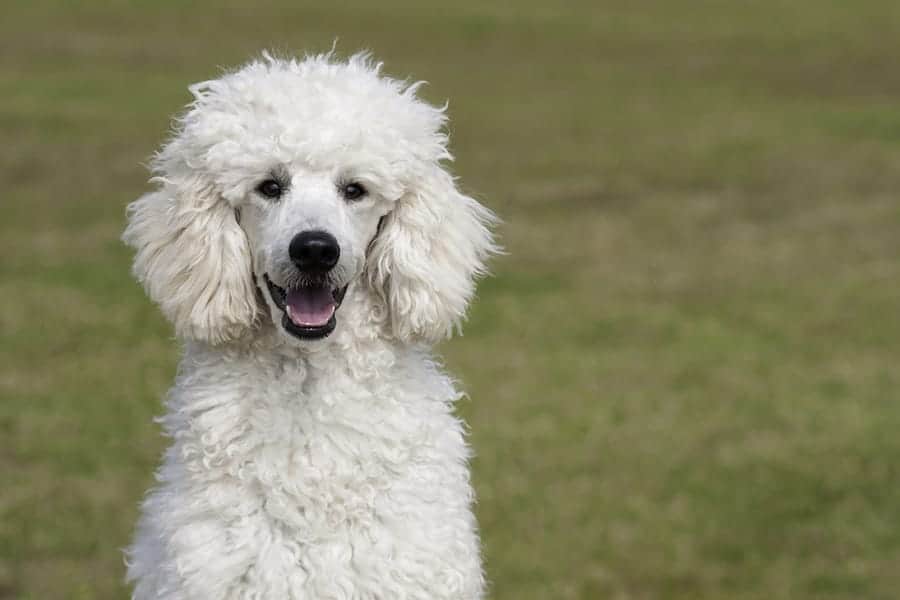
The Poodle is another popular pup on the list of German dog breeds.
A noble dog, the Poodle comes in three types – toy, standard, and miniature – with curly coats that can either be white or black.
There is a stereotype that Poodles are a pretentious, fragile dog breed. However, they are pretty athletic and love to play and have fun.
The origin of the breed is still being debated. Experts dispute whether the Poodle descends from Germany as a water dog or if its lineage dates back to the French Barbet.
We’ll include the Poodle in our guide to German dog breeds until there is a definitive answer.
8. Great Dane
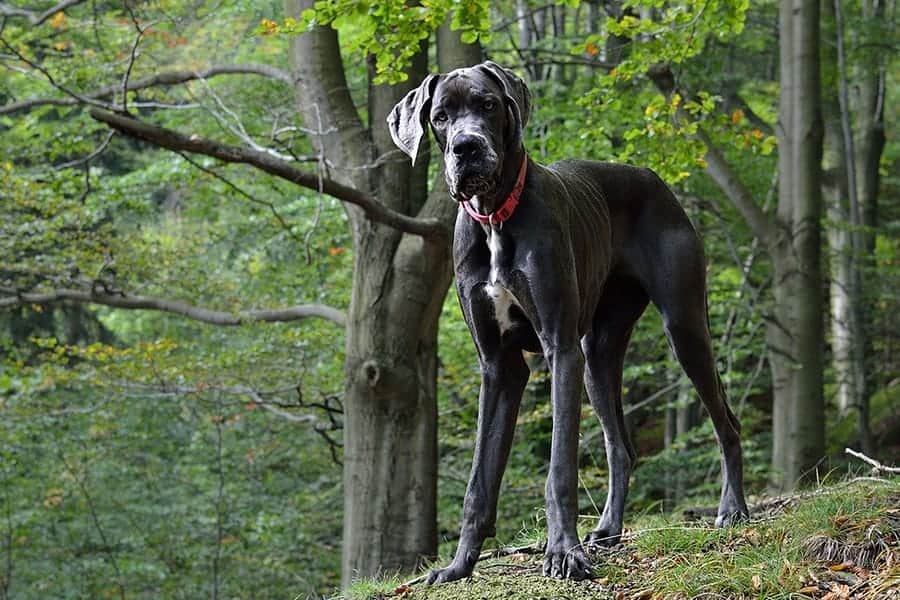
The Great Dane is a dependable dog with a heart of gold. They are considered a gentle giant, growing up to 32 inches and 175 pounds.
Despite their large, lean, and somewhat gangly appearance, the Great Dane moves with elegance and smoothness and projects an air of nobility. While friendly and loving, they are also alert and watchful, providing excellent protection for their family.
The Great Dane can trace its history back at least 400 years when people used it for hunting boars.
At the time, boars served as a significant food source. There was one challenge, though: boars are incredibly fast and aggressive.
That’s where the Great Dane came in. This large and strong dog could take on the boar and help provide food for its owners.
9. Boxer
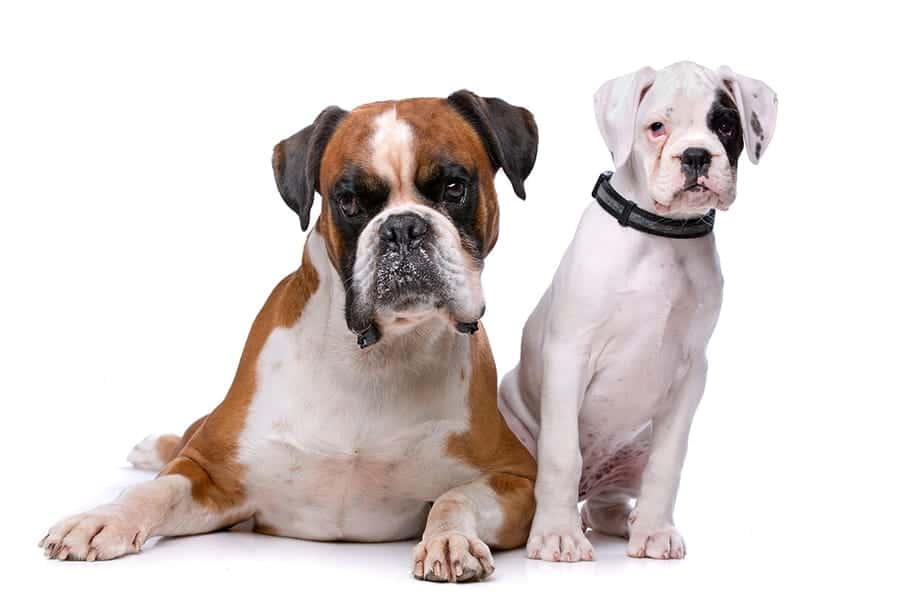
Another popular entry on the list of German dog breeds, the Boxer is an active and lovable dog.
They have immense popularity due to their sweet, playful nature and adorable appearance. After all, who can resist their kind eyes, button nose, and scrunched face?
Considered athletic and muscular, the Boxer moves with smooth and graceful athleticism.
The breed can trace its history back to late 19th century Germany. It descends from dogs used to hunt wild boar, bear, and deer.
10. Weimaraner
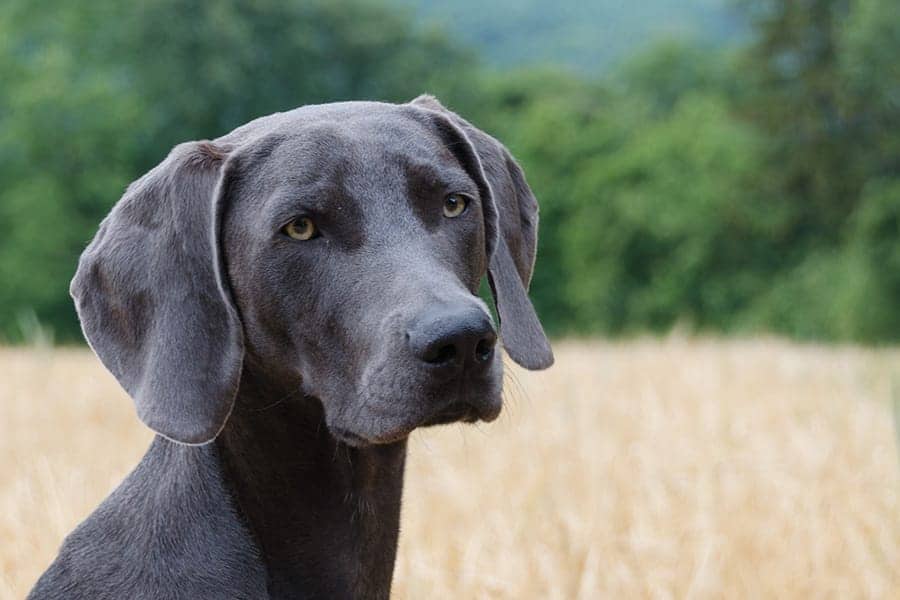
Weimaraners are obedient and friendly dogs known as Germany’s “Gray Ghost.” The breed stands out for its silver-gray coat, long, velvet ears, and striking eyes.
Weighing up to 90 pounds, these dogs love being outdoors and getting lots of exercise. They are easily trained as hunters and make a playful, loving family member.
The Weimaraner is believed to have descended from the Bloodhound during the early 1800s in Germany.
11. Leonberger

One of the quintessential German dog breeds, the Leonberger is a large yet gentle dog that tops the scales at 170 pounds.
However, despite their hulking appearance, the Leonberger is considered a gentle giant with a sweet demeanor. It also moves with impressive speed and agility.
The Leonberger also stands out for its lion-like mane. In addition, the breed’s coat plumes out around its chest and neck. This also adds to its perceived size.
If it seems like the Leonberger is fit for a king, it is. Heinrich Essig developed the breed from Leonberg, Germany, who combined Saint Bernards, Newfoundlands, and other large working breeds to create a dignified dog specifically for European royalty.
12. German Pointer
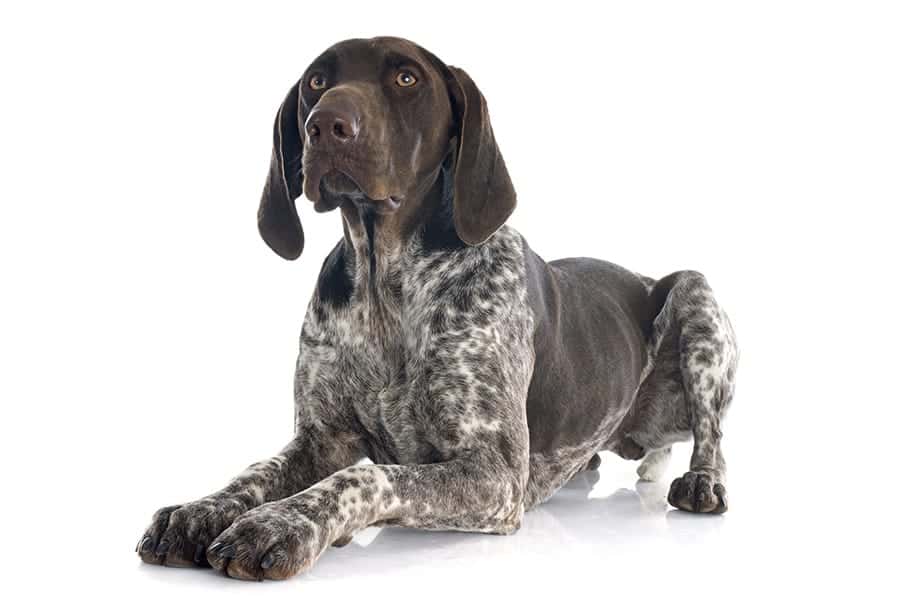
As the name implies, the German Pointer is another dog that counts Germany as its homeland. The breed comes in shorthaired and wire-haired breeds, with a mixture of colors and markings that make each one appear unique.
For many generations, German Pointers have been used in all types of hunting. They can also transition easily from hunter to family companion, making them excellent dogs for all owners.
While the German Pointer’s history isn’t exactly clear, it is likely a descendant of various German hound and tracking dogs and dates back to the 1700s.
13. German Pinscher

The German Pinscher is a strong breed with an elongated head, a slightly muscular body, and a shiny coat that can be reddish or black with red accents.
The Pinscher is a working breed that hunts vermin and protects its territory. It does well with other dogs and is easy to train.
They are intelligent, determined, and a good representation of the no-frills kind of dog that originated in Germany. It’s one of the oldest dog breeds and is the predecessor to the Doberman, Miniature Pinscher, and other Pinscher types.
14. Miniature Pinscher
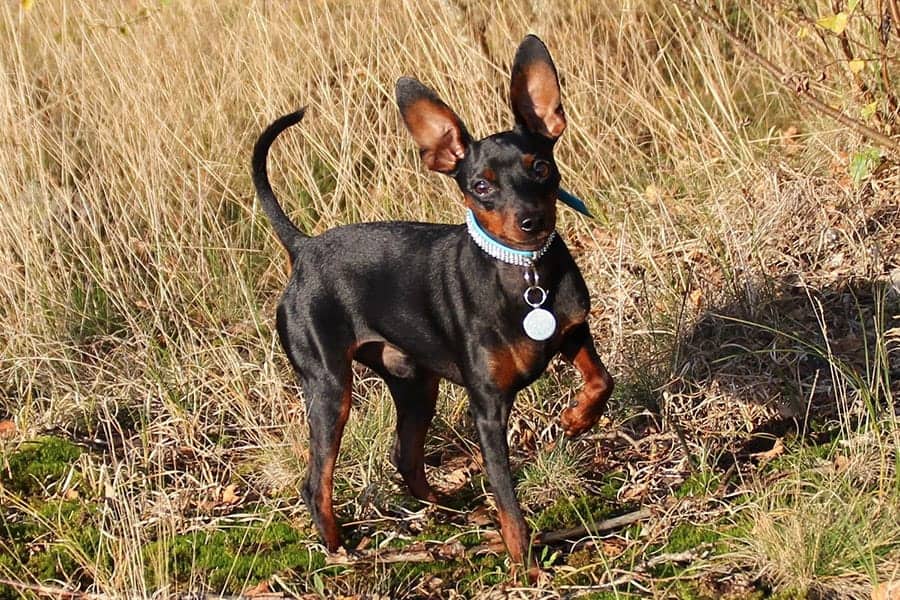
Speaking of Miniature Pinschers, this breed is a small but sturdy dog weighing 10-12 pounds.
Fearless and fun, the Miniature Pinscher walks with a high-stepping “hackney” gait, affectionately earning the description from the trot of a hackney horse.
Their smooth, shiny coat comes in solid red, rust, and chocolate, or rust and black.
The exact history of the Miniature Pinscher is unknown, although it’s thought that the breed’s earliest ancestors may have included the German Pinscher mixed with Italian Greyhounds and Dachshunds.
15. Affenpinscher

The small but mighty Affenpinscher is a 10-pound dog that looks a bit like a monkey. In German, their name means “monkey-like terrier.”
One of the unique German dog breeds, the Affenpinscher, was initially bred to clear rodents from kitchens and stables.
Affenpinschers are rare today, but those who own one find these dogs make excellent companions and are easy to train, although they are slightly headstrong.
This breed may not be a great choice if you have children because they don’t tolerate being squeezed or chased. Being in a multi-dog home isn’t an issue, however.
16. American Eskimo
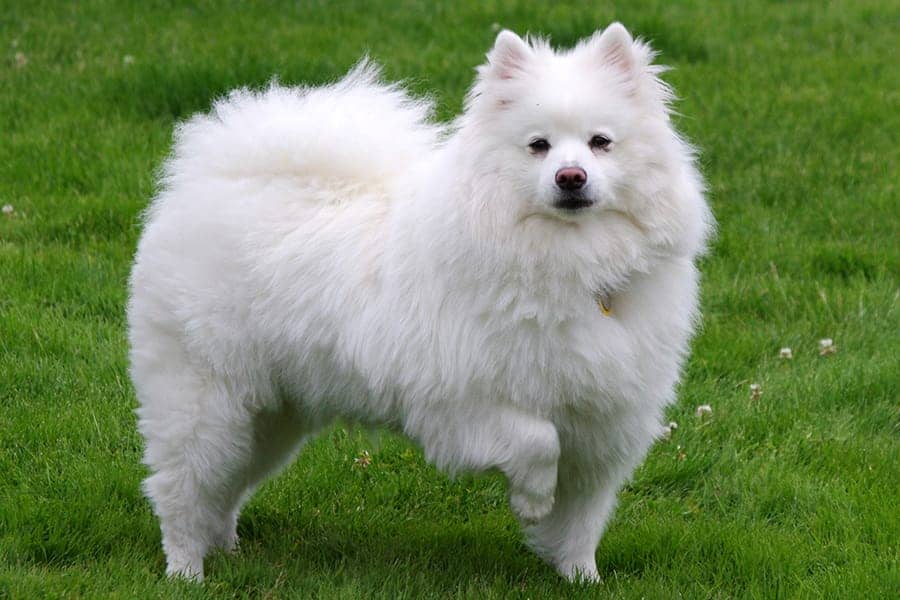
Despite its name, the American Eskimo is a German dog breed. The dog descends from the German Spitz, but due to anti-German sentiment during the First World War, it was renamed “American Eskimo Dog.”
The American Eskimo ranges from small to medium-sized and is a playful, loving companion. The breed is known for its bright white coat, perky ears, jet-black nose, and lips.
American Eskimos are obedient, agile, and easy to train, to the point that they were once used as circus dogs. They are good with children and other dogs.
17. Wirehaired Pointing Griffon
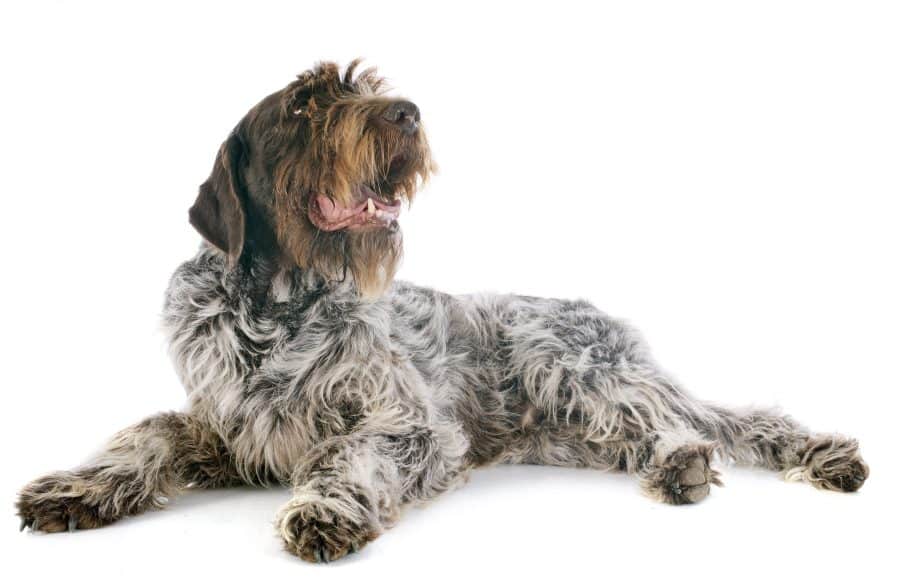
The Wirehaired Pointing Griffon is a friendly and devoted dog developed in Biebesheim am Rhein, Germany.
Medium in size, the breed sports a bristly coat and a messy appearance that makes them even more lovable. They stand out for their trademark bushy eyebrows and mustache that are gray with brown markings.
Known as the “supreme gun dog,” Griffons are intelligent and quick-witted, making them superb hunting companions. They are also loyal and loving family dogs.
18. Keeshond
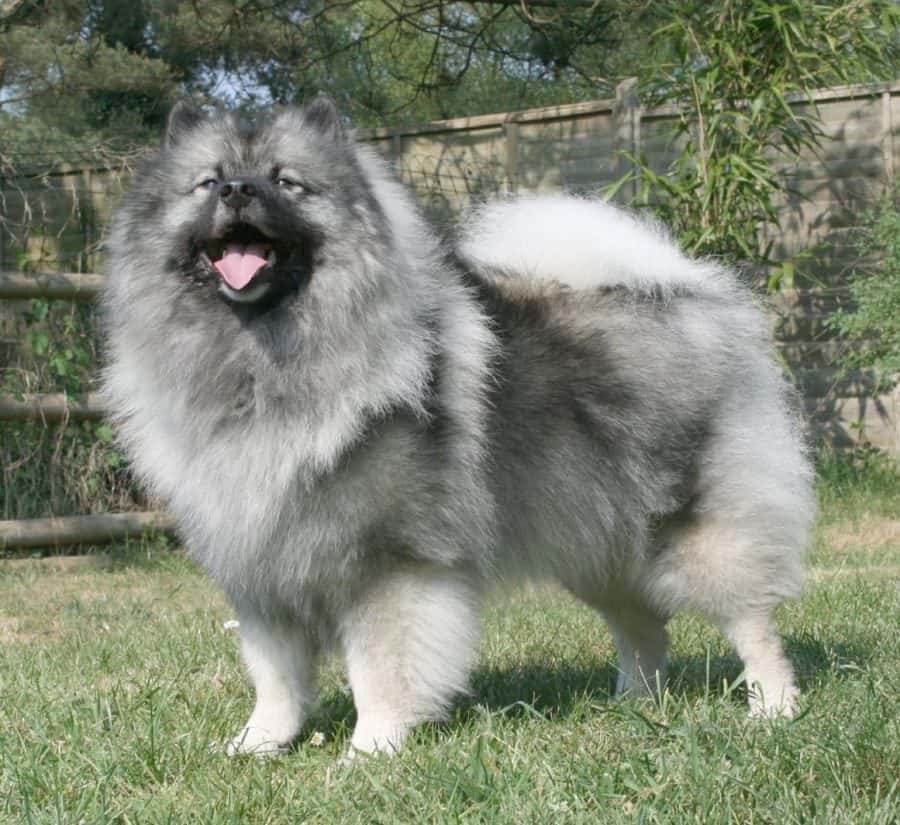
The Keeshond is an adorable entry on the list of German dog breeds. How could you not love the fox-like face, thick coat, and curled-up, plumed tail?
The Keeshond is notable for the distinctive patterns in its fur and unique markings around the eyes. In addition, they have a kind disposition and energetic personality, making a great addition to any family.
The breed is cited as being part of the German Spitz family and has a storied history as a watchdog on the Rhine River.
19. German Spitz

The German Spitz is a lively, attentive breed and has proven to be an exceptionally devoted dog to its owners.
Weighing around 25 pounds on average, the breed has an adorable fox-like face, a bushy tail that loops over its back, and a fluffy, mane-like collar around its neck.
According to the American Kennel Club (AKC), the German Spitz is one of the most ancient dog breeds and the oldest, originating from Central Europe. Its breed lineage is tied closely to both the Pomeranian and Keeshond.
20. Münsterländer
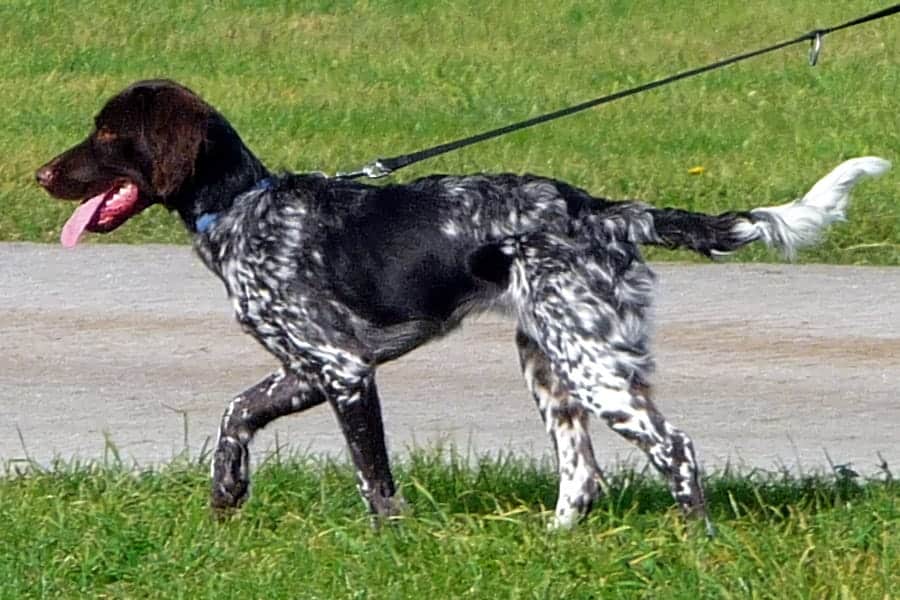
The Münsterländer is a hunting dog known for its impressive dual-colored coat. Bred in two sizes, the Large Münsterländer weighs between 50-70 pounds while the Small Münsterländer weighs anywhere from 35-60 pounds.
This dog is extremely intelligent and has excellent tracking skills. In addition, their strong, even-tempered personality makes them excellent pets.
Instinctually, the Münsterländer loves being part of a pack. They are excellent family dogs and will enjoy spending lots of time outdoors together.
21. Eurasier

Eurasiers are medium-sized dogs reaching up to 24 inches and 70 pounds. Their thick, long coat comes in many colors and can have white patches throughout. (Some Eurasiers even have what looks like a reverse mask on their face.)
Confident and calm, the Eurasier is a loyal pet that serves as a great family dog. Their even-tempered, loving demeanor makes them excellent companions for children and adults alike.
A relatively new entry to the German dog breeds list, the Eurasier was developed in 1972 when a Chow Chow and a Wolfspitz were bred and mixed with a Samoyed.
22. Jagdterrier

A German hunting breed, the Jagdterrier is an easily trained, social, and courageous dog.
Weighing up to 22 pounds, the Jagdterrier has a coarse, rough coat with black or tan coloring and markings on its muzzle, eyebrows, chest, legs, and the base of its tail.
The breed’s smaller, compact size makes it great for hunting, and owners love the pup’s loyal and reliable personality.
23. Hovawart
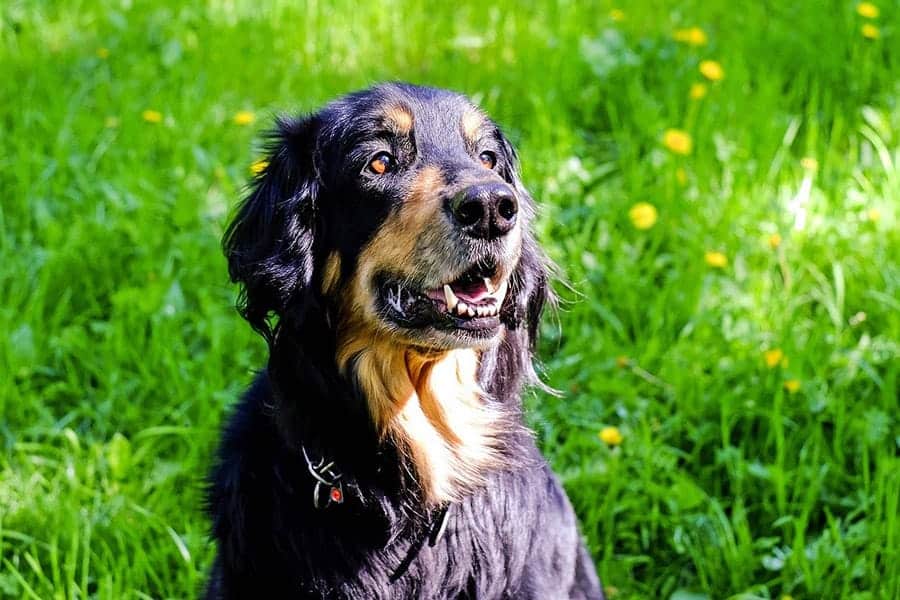
Intelligent, alert, and incredibly loyal, the Hovawart is a faithful pup bred to be a guardian and working dog. The name combines “farm” (Hova) and “watchman” (Wart) in an older form of the German language.
The breed comes in three colors – black, tan, and blonde – and can weigh up to 90 pounds.
Hovawarts have an even temperament and are very protective and confident. The breed makes an excellent family dog with a deep devotion to its owners.
24. Löwchen
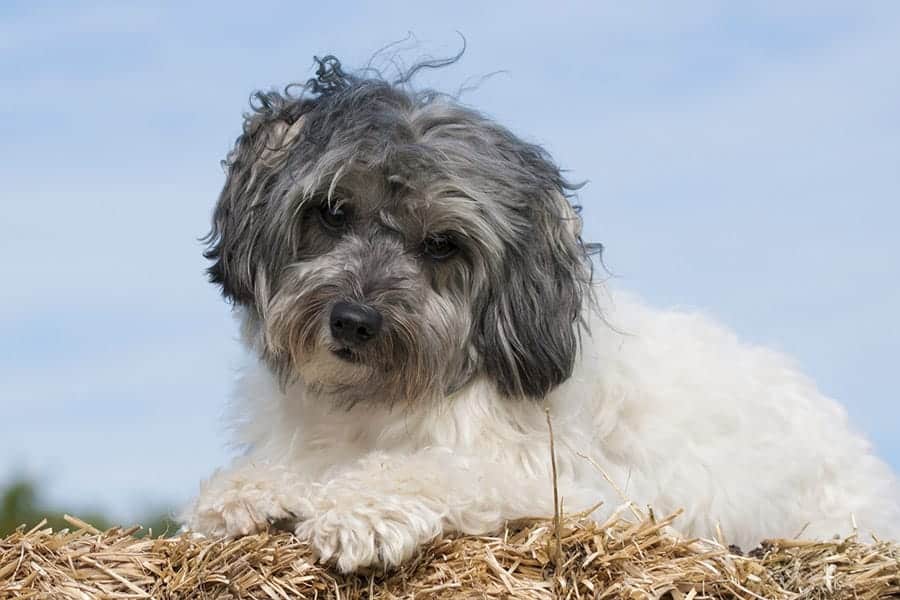
Although rare today, the Löwchen was one of the most popular pets in continental Europe for over 500 years. The breed’s name means “little lion” in German.
Sweet, affectionate, and full of life, the Löwchen is a compact dog weighing anywhere from 10-18 pounds.
The breed stands out for its long, wavy coat that comes in many different colors. Traditionally, the Löwchen’s coat can be groomed into a “lion cut” where the legs are shaved, except for a section around the ankles, and the rest of the fur left long.
25. Bavarian Mountain Hound
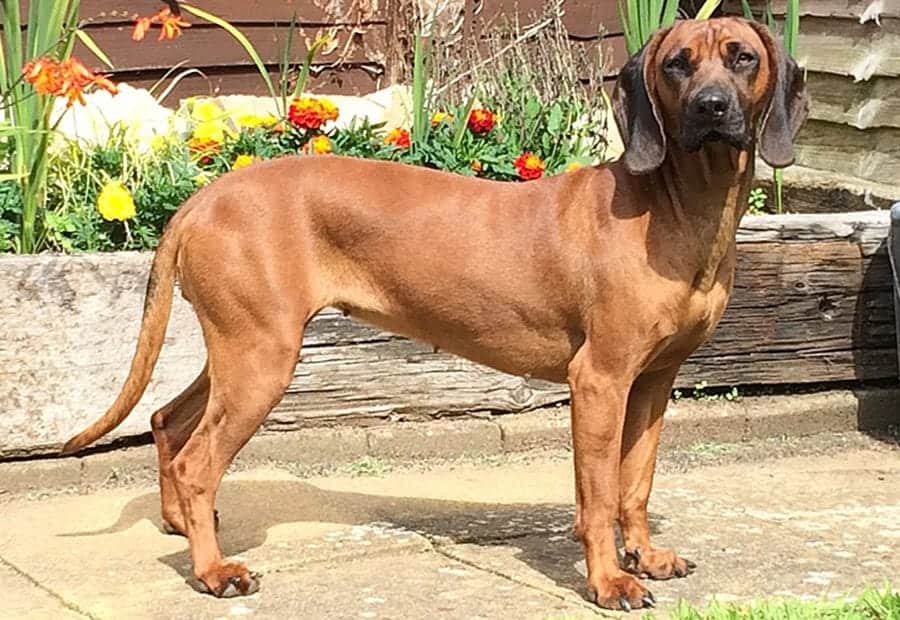
Last but not least on the guide to German dog breeds is the Bavarian Mountain Hound. The breed is considered the premier German hunting dog with a nose that can’t be beaten.
This medium-sized dog is calm and self-assured when weighing anywhere from 35-65 pounds. They remain fiercely loyal to their owners but may be slightly reserved with strangers at first.
Conclusion: German Dog Breeds
As you can see from these 25 German dog breeds, the country has created some of the most noteworthy hounds in history.
The diversity of the dogs is also remarkable. From the long and low Dachshund to the tall and lanky Great Dane, German dog breeds have unique appearances and personalities.
Germany created many incredible canines throughout the ages, and the world is a better place for it. If you’ve selected one of these breeds, you might want to give it a German dog name.
If you’re looking for a dog breed, check out the dog breed selector here.
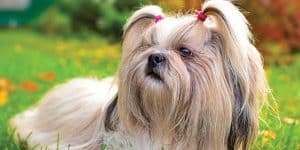
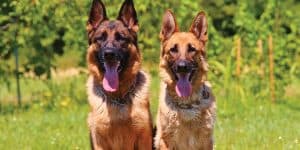
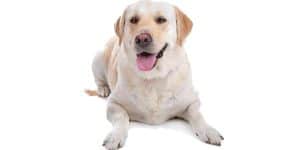
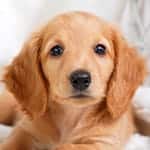 Getting a New Dog?
Getting a New Dog?